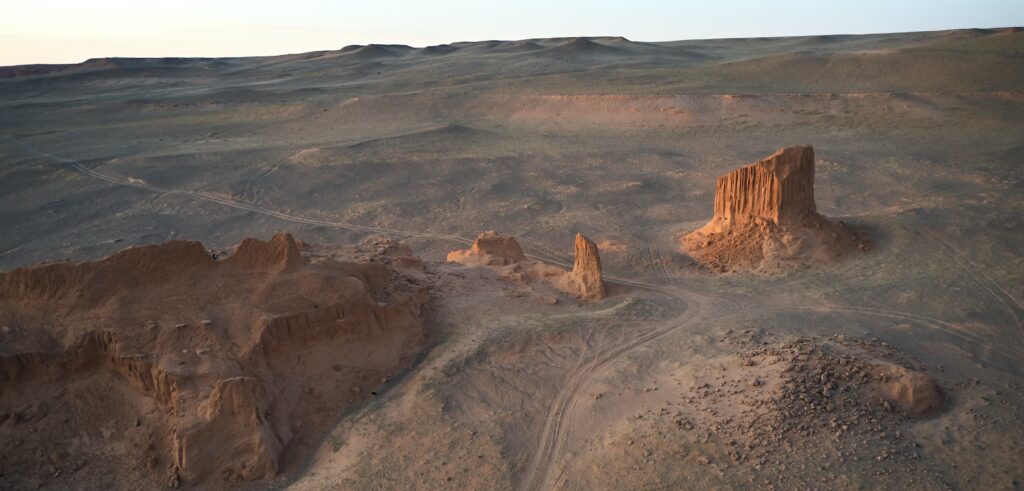When one thinks of deserts, the first places that come to mind are usually the vast expanses of sand dunes in the Sahara or the scorched red earth of the Australian Outback. However, Asia is also home to several large deserts, including the largest of them all, the Gobi Desert.
Where is the Gobi Desert?
Located in northern and northwestern China and southern Mongolia, the Gobi Desert covers an area of over 500,000 square miles (1.3 million square kilometers). This makes it the fifth-largest desert in the world and the largest in Asia.
Is the Gobi Desert Hot?
The Gobi Desert is a cold desert, with temperatures ranging from -40 degrees Fahrenheit (-40 degrees Celsius) in winter to 113 degrees Fahrenheit (45 degrees Celsius) in summer. Despite its arid climate, the Gobi is home to a surprising variety of flora and fauna.
Camels, gazelles, and snow leopards are just a few of the animals that call the Gobi home, while saxaul trees, desert poppies, and other hardy plants have adapted to the harsh conditions.
History of the Gobi Desert
The Gobi has a long and fascinating history. It has been inhabited by humans for thousands of years, with evidence of early human settlements dating back to the Stone Age.
The Silk Road, the ancient trade route that connected China to the Mediterranean, passed through the Gobi, bringing merchants, travelers, and cultures from across Asia and Europe.
Today, the Gobi is still an important part of China’s economy, with vast reserves of coal, copper, and other minerals found beneath its sands. However, human activity has also brought environmental challenges to the desert.
Overgrazing by livestock and the expansion of agriculture have led to desertification and soil erosion in some areas, while mining and other industrial activities have caused pollution and habitat destruction for wildlife.
Efforts are underway to protect the Gobi’s delicate ecosystem and promote sustainable development in the region.
The Chinese government has established several nature reserves and national parks in the Gobi, while local communities and conservation organizations are working to promote eco-tourism and support traditional herding practices that are more sustainable for the environment.
Largest Desert in Other Continents
So, we know the Gobi Desert is the largest in Asia, but what about the largest in other continents? Let’s take a look.
Africa: Sahara Desert – spanning an area of about 3.6 million square miles (9.4 million square kilometers), the Sahara is the largest hot desert in the world and covers most of North Africa.
North America: Great Basin Desert – covering an area of approximately 190,000 square miles (490,000 square kilometers), the Great Basin Desert is the largest desert in North America and is located primarily in the western United States.
South America: Patagonian Desert – stretching across Argentina and Chile, the Patagonian Desert covers an area of about 260,000 square miles (670,000 square kilometers) and is the largest desert in South America.
Europe: Arctic Desert – located in the northernmost regions of Scandinavia and Russia, the Arctic Desert covers an area of approximately 5,400 square miles (14,000 square kilometers) and is the largest desert in Europe.
Australia: Great Victoria Desert – spanning an area of about 250,000 square miles (647,000 square kilometers), the Great Victoria Desert is the largest desert in Australia and covers parts of Western Australia and South Australia.
Largest Desert in the World
While all of these deserts are impressive, none of them are the biggest deserts in the world.
Antarctica is considered the largest desert in the world because it meets the criteria of a desert. While the common perception of a desert is a hot and arid environment, a desert can be defined as any area that receives less than 10 inches (25 centimeters) of precipitation annually.
Antarctica receives less than 2 inches (5 centimeters) of precipitation per year on average, making it an extreme example of a desert.
Additionally, Antarctica’s temperature is very low, with the continent experiencing the coldest temperatures on Earth.
The average temperature during the winter months is around -40 degrees Fahrenheit (-40 degrees Celsius), while the summer temperatures can range from 5 to 20 degrees Fahrenheit (-15 to -6 degrees Celsius).
The extreme cold and dry conditions make it difficult for plants and animals to survive, further emphasizing the desert-like nature of Antarctica.
Final Thoughts
The Gobi Desert is the largest desert in Asia and one of the most important natural and cultural landscapes in the world.
Despite its challenges, it remains a place of great beauty, diversity, and resilience, and its future depends on our ability to balance economic development with environmental protection and sustainable practices.

